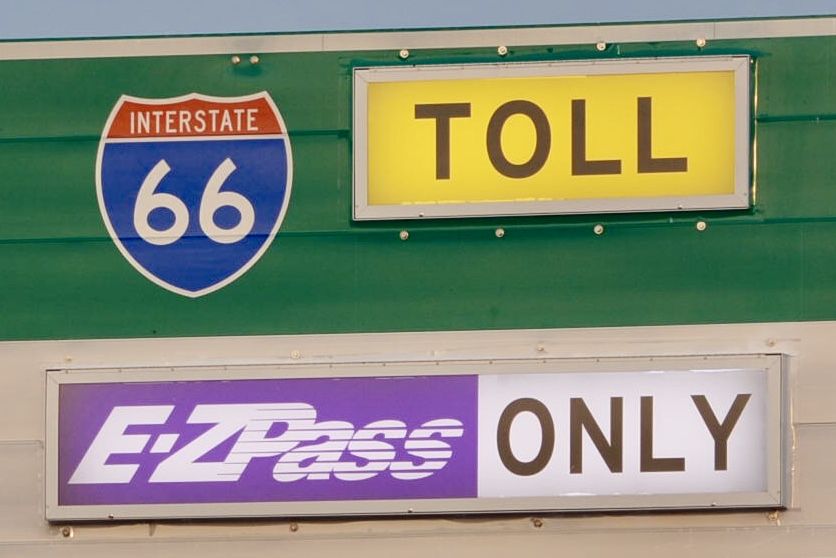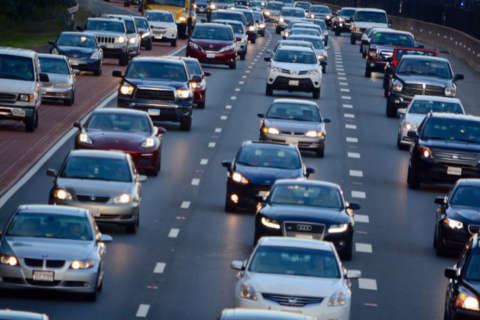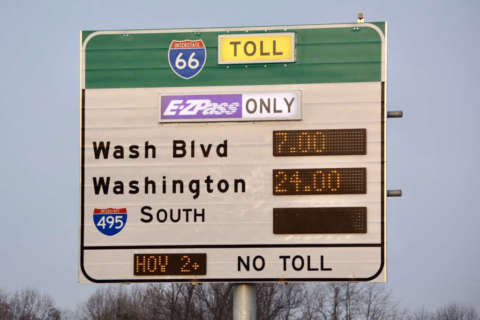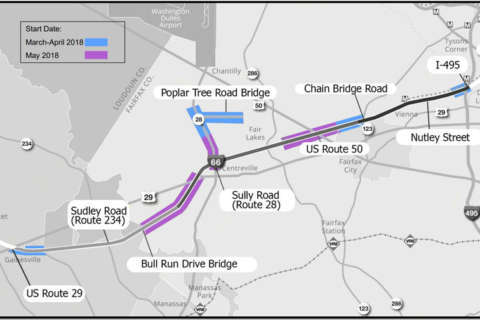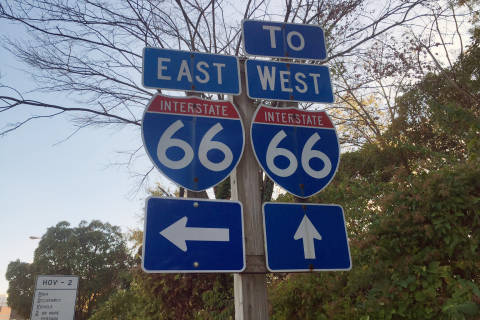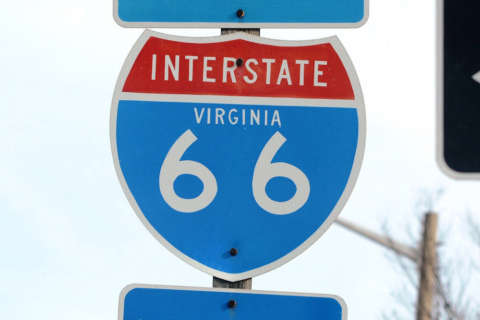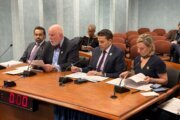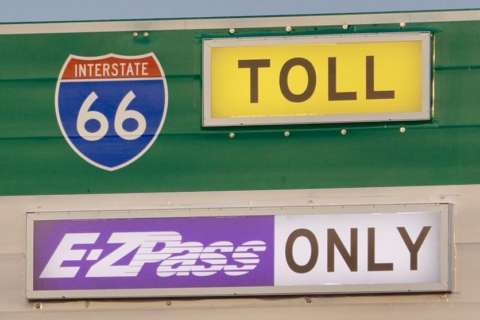
WASHINGTON — Virginia is making changes as soon as the next few weeks that could lower rush-hour toll prices for some solo drivers on Interstate 66 inside the Capital Beltway, WTOP has learned.
The changes to the pricing algorithm in coming weeks could lower tolls outside of the very busiest times or on certain days of the week, but may not immediately make significant changes to the peak toll prices at the height of the morning rush hour. At the times with the highest tolls, traffic on Interstate 66 has slowed down somewhat from earlier in the morning.
The highest toll prices have consistently been eastbound between about 8:30 a.m. and 9:15 a.m. The tolls rise as more vehicles enter the lanes, with the intent of discouraging more and more people driving alone from joining the traffic so that those who are on the road can keep moving.
In February, 989 drivers paid $40 or more for an eastbound morning trip over the length of the corridor.
“I think there are always tweaks that can be made … and we’re monitoring the tolls, monitoring the times, and if there are things that we think we can do to improve it, we surely will,” Virginia Gov. Ralph Northam said on WTOP’s Ask the Governor last week.
Now, the first of those tweaks that have been promised since shortly after the system launched Dec. 4 are set to roll out soon, Virginia Deputy Transportation Secretary Nick Donohue said.
“Not every day of the week is the same, nor is each hour of the four-hour period the same,” Donohue said.
Changes to the toll pricing algorithm and target travel speeds, additional information posted about parallel alternative routes and a continued push to get more people to carpool are all expected to be pieces of the changes in coming months.
The exact changes to the pricing algorithm rolling out soon are not expected to be permanent. More ongoing adjustments are expected based on traffic impacts, how drivers react and what toll prices turn out to be.
“This is not a ‘you do one thing and you’re done,’ this is going to be an incremental thing over time,” Donohue said.
The changes to the complex tolling system are based on traffic flows and driver reaction to toll prices over the first nearly five months of the tolling and expanded HOV hours.
One of the biggest changes will likely allow for a lower target speed for traffic, at least at times where patterns have shown the risk is lower of a quickly-building backup that would be difficult to recover from during the rush-hour period.
A lower target speed of 50 mph, for example, would permit more cars to enter the lanes before tolls rise as sharply. An alternate outcome of lowering the speed could be the same toll rates, with more cars on the road.
State transportation leaders have been promising to consider changes to the algorithm for months, but have continually asked for more time to evaluate additional data that includes the more consistent traffic patterns of February, March and April as opposed to the holiday-influenced traffic patterns of December and January.
Average toll rates paid in February were $8.71 eastbound in the morning and $4.51 westbound in the afternoon. The morning tolls have consistently been higher than the afternoon tolls, primarily due to a more compressed rush hour and the delays caused by the Dulles Connector Road merge.
“We have been monitoring the I-66 tolls, we feel that the project is working as it should,” Northam said last week.
The average tolls paid include trips on only part of the tolled stretch, and do not include violation fees tacked onto bills sent in the mail to the one in eight drivers using the road without an E-ZPass.
About 44 percent of vehicles are riding free during the tolling hours with a minimum of two people in the car and an E-ZPass Flex flipped to HOV mode. Motorcycles also ride free.

